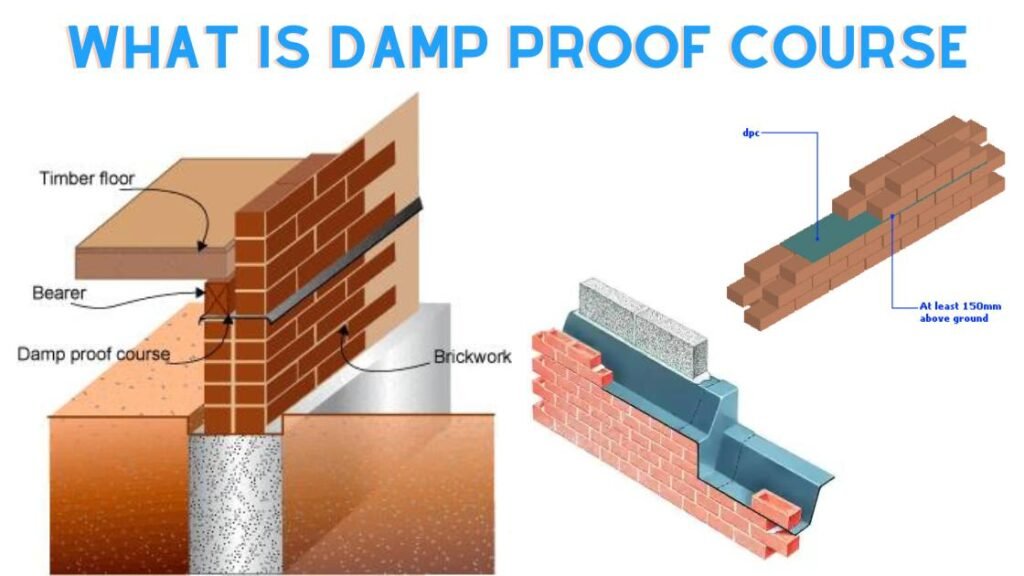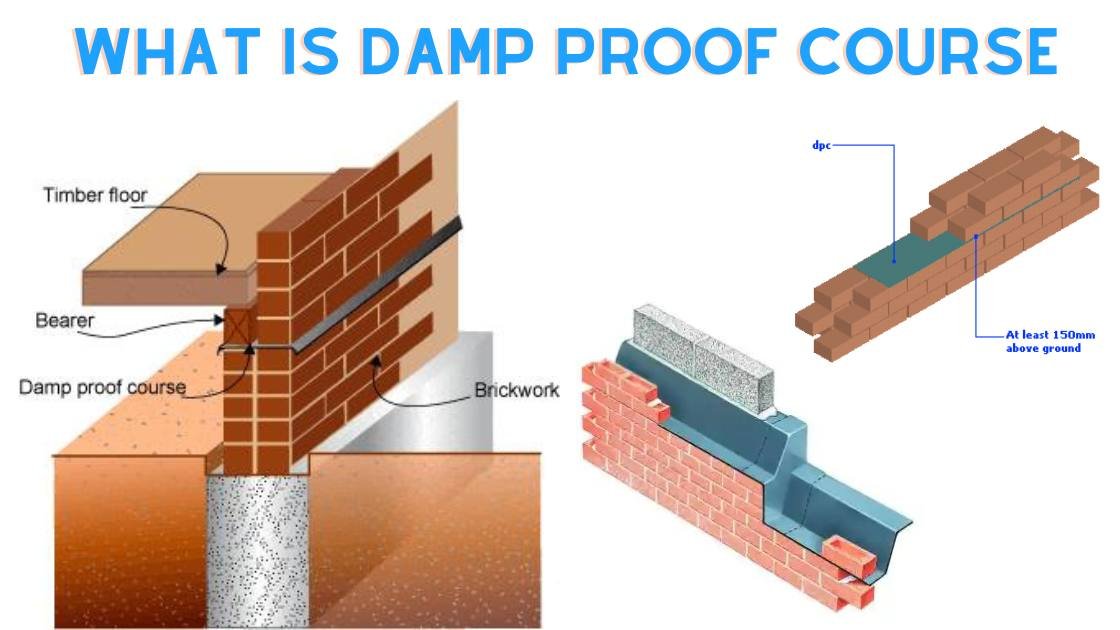Discover everything you need to know about Damp Proof Course (DPC) in this comprehensive guide. Learn how DPC works, its importance in construction, and how to address damp issues effectively.
Dampness in buildings can lead to a range of problems, from unsightly stains on walls to structural damage. Fortunately, there’s a solution: Damp Proof Course, commonly referred to as DPC.
In this guide, we’ll explore DPC in detail, covering its definition, types, installation, and maintenance. Whether you’re a homeowner, builder, or simply curious about construction, this guide will provide you with valuable insights into the world of Damp Proof Course.
What is Damp Proof Course?
Damp Proof Course, or DPC, is a vital component in building construction and architecture. It is a barrier designed to prevent moisture from rising through walls, floors, and foundations. DPC materials are typically impermeable to water and are installed at various levels within a building to create a waterproof barrier.
Importance of DPC in Construction
Dampness in buildings can lead to a host of problems, including:
- Structural Damage: Moisture can weaken the structural integrity of a building over time.
- Health Issues: Damp conditions can promote mold growth, leading to health concerns.
- Aesthetic Damage: Stains, peeling paint, and damp patches are unsightly and can reduce property value.
- Energy Efficiency: Damp walls can reduce the energy efficiency of a building.
DPC plays a crucial role in preventing these issues, making it an essential element in construction.

Types of Damp Proof Course
There are several types of Damp Proof Course, each suited to specific applications. The choice of DPC depends on factors such as the building’s construction, location, and the type of dampness it is intended to prevent. The most common types include:
1. Physical DPC
- Physical DPCs are typically made of materials like slate, bitumen, or plastic sheets. They are installed physically within the structure to create a barrier against rising damp.
2. Chemical DPC
- Chemical DPCs involve the injection of chemical compounds into the walls or floors to create a barrier. This method is often used for retrofitting DPC in older buildings.
3. Electro-Osmotic DPC
- Electro-osmotic DPCs use electrical currents to drive moisture away from building materials, effectively preventing rising damp.
Recommended for you
- All Cement Price List Today 2023 | Today Cement Price Per Bag
- List of Most Useful Civil Engineering Software – Explained
- Modular Kitchen Trends
Installation of DPC
Proper installation of DPC is critical to its effectiveness. The installation process involves:
- Preparation: Assessing the building’s condition and identifying the appropriate type of DPC.
- Treatment: Applying physical or chemical DPC materials at the correct level within the structure.
- Curing: Allowing the DPC to set and create an impermeable barrier.
- Testing: Conducting tests to ensure the DPC is working effectively.
Common Signs of Dampness
Identifying dampness in a building is essential for timely intervention. Common signs of dampness include:
- Damp Patches on Walls: Watermarks or stains on walls.
- Peeling Wallpaper or Paint: Moisture can cause wallpaper or paint to peel.
- Mold and Mildew Growth: Often seen as black spots or patches.
- Musty Odor: A damp, unpleasant smell.
- Decayed Wood: Wooden structures may rot in damp conditions.
Addressing Damp Issues
If you suspect dampness in your building, it’s essential to address the issue promptly. Remedies may include:
- DPC Installation: Adding or repairing DPC.
- Improving Ventilation: Enhancing airflow to reduce humidity.
- Drainage Solutions: Ensuring proper drainage around the building.
- Repairs: Fixing leaks and damaged areas.
- Mold Removal: Safely removing mold and mildew.
FAQs (Frequently Asked Questions)
How do I know if my building needs DPC installation?
Signs of dampness, such as watermarks, peeling paint, or a musty odor, may indicate the need for DPC installation. Consulting a professional is advisable.
Can I install DPC in an older building?
Yes, retroactive DPC installation is possible using chemical or physical methods. Consult a specialist for guidance.
Is DPC installation a DIY project?
While some measures like improving ventilation can be DIY, DPC installation should be done by professionals to ensure effectiveness.
How long does DPC last?
The lifespan of DPC can vary depending on factors like the type of DPC and environmental conditions. A well-installed DPC can last for many years.
Can DPC prevent all types of dampness?
DPC is effective against rising damp, but other forms of dampness, such as condensation or lateral damp, may require different solutions.
Is DPC installation costly?
The cost of DPC installation varies depending on factors like the size of the building and the type of DPC. It is an investment in the long-term health of the structure.
DPC Conclusion
Damp Proof Course (DPC) is a crucial component in construction, protecting buildings from the damaging effects of moisture. Understanding the types, installation process, and signs of dampness is essential for maintaining a safe and healthy living or working environment.
If you suspect dampness in your building, consult a professional for a thorough assessment and appropriate remediation. DPC is your ally in the battle against dampness, ensuring the longevity and structural integrity of your property.
